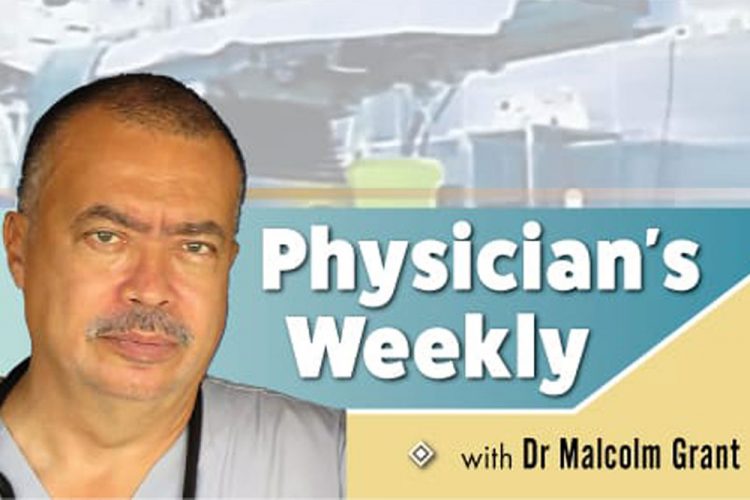Controlling Migraine Headaches (Part 2)

Q: I have been diagnosed with migraine (headaches) years ago. I have had a CT scan and MRI and nothing abnormal was found in my head. I have been prescribed all types of medicines, but nothing seems to work satisfactorily, I still get a severe migraine twice a month. They are worst with my periods. What do you suggest?
Please also see “Controlling Migraine Headaches (Part 1)” Last Friday
Possible Migraine Triggers
Many persons have triggers for their migraine headaches and by accurately identifying such, this can go a long way in significantly reducing the severity and frequency of their headaches. These triggers will be reviewed under the following headings: dietary, emotional, physical, environmental, and hormonal.
It is highly recommended that ALL migraine sufferers keep a headache diary in order to identify possible triggers. The following link provides a template for such a diary: https://patient.info/news-and-features/migraine-trigger-diary
Dietary Triggers:
• Cheese
• Caffeine – Coffee/ Tea
• Chocolate
• Nuts and their butters – e.g. peanuts
• Fruits and their juices – e.g. citrus, passion fruit, tomato, bananas, avocados
• Vegetables – onions, peas, beans, corn
• Soy products
• Cured meats – e.g. hotdogs, ham, bacon, pepperoni, salt fish, corned beef, pig tail, luncheon meat
• Pickled foods – e.g. souse
• Baked goods made with yeast
• MSG
• Aspartame
• Yogurt
• Vinegar
• Alcohol – e.g. red wine, beer, champagne
• Missing meals
• Dehydration
If one suspects that there may be something in the diet that is triggering the migraines, it should be eliminated. After a period, it can be reintroduced. If the migraines return shortly thereafter it is likely that the migraines are related to this food. Remember that foods and drinks that may trigger your migraine may have been ingested up to 72 hours before the onset of your migraine (related) symptoms.
. Emotional Triggers:
• Depression
• Worry
• Mental fatigue
• Excitement
• Stress
• Anxiety
• Shocking news
Environmental Triggers:
Changes in:
• Humidity
• Temperature
• Altitude
• Barometric pressure
• Wind speed (high)
Other:
• Travel
• Change in routine
• Strong smells
• Smoke
• Loud noise exposure
• Bright lights
• Flickering screens – e.g. TV
Physical Triggers:
• Under or oversleep
• Excessive fatigue
• Low blood sugar
• Strenuous exercise
• Overexertion
• Poor posture/ Neck strain
• Shift work
Hormonal Triggers:
More than 50% of women who experience migraine, experience such at the time of their periods. This is likely secondary to a dip in the oestrogen levels at this time.
These migraines usually occur between two days before and up to three days after the start of the period. These are referred to as menstrual related migraines.
Most women note a significant reduction in the frequency and severity of their migraines after menopause.
They can be treated with regular migraine meds, continuous use of the oral contraceptive pill, and oestrogen therapy.
Medications for relief
These work best when taken at the first sign of an oncoming migraine, these include:
• Over the counter and prescription pain relievers
• Triptans. Sumatriptan, Rizatriptan. Use cautiously in those at risk of a stroke or heart attack.
• Dihydroergotamine
• Anti-nausea drugs.
Preventive medications include:
• Blood pressure-lowering medications.
• Tricyclic antidepressants.
• Anti-seizure drugs
Some of these drugs are not safe to be used while pregnant or in persons with certain medical conditions.
Author: Dr. C. Malcolm Grant – Family Physician, c/o Family Care Clinic, Arnos Vale, www.familycaresvg.com, clinic@familycaresvg.com, 1(784)570-9300 (Office), 1(784)455-0376 (WhatsApp)
Disclaimer: The information provided in the above article is for educational purposes only and does not substitute for professional medical advice. Please consult a medical professional or healthcare provider if you are seeking medical advice, diagnoses, or treatment. Dr. C. Malcolm Grant, Family Care Clinic or The Searchlight Newspaper or their associates, respectively, are not liable for risks or issues associated with using or acting upon the information provided above.











